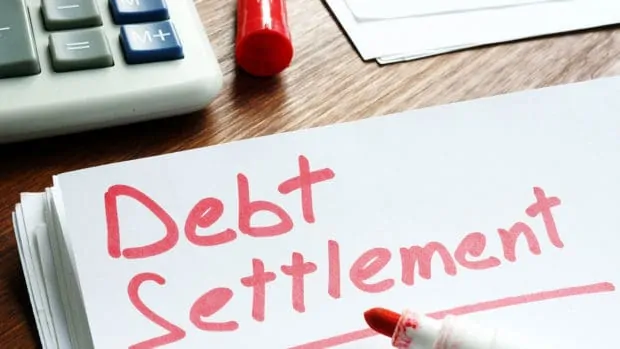Let’s face it, everybody makes mistakes. But when it comes to your credit, past mistakes with debt repayment can lead to bad credit. Any action you take that creates a negative item on your credit report will decrease your credit score. Too many negative items can lead to high interest rates and rejections on loan applications. So, if you have these issues, you want to know how to get negative items off your credit report as quickly as possible.
There are four ways to legally get rid of negative credit report items:
| Credit repair | If the item is a mistake, you can dispute the item to have it removed. |
|---|---|
| Re-aging | The creditor agrees to report the account as current, as long as you’re making payments. |
| Pay for delete | Negotiate with a collector to remove the collection account if you pay a settlement. |
| Wait it out | Negative items fall of your credit report naturally after a certain amount of time. |
Determining the best way to get a negative item off your credit report really depends on your situation.
Option 1: Credit repair
This is the most common and usually best way to get negative items removed from your credit report. Here is how it works:
- By law, information can only be included on your credit report if it can be verified by the credit issuer (or collector).
- If you believe an item can’t be verified, you can dispute it with the credit bureau that issued the report.
- The credit bureau has 30 days to verify the information.
- If it can’t be verified then it must be removed.

This is a process known as credit repair. It’s usually used when you find mistakes on your credit report, like a missed payment that you made on time. Since creditors can’t verify erroneous information, it’s the best way to get rid of negative items in your credit report that shouldn’t be there.
However, in addition to removing mistakes, it can also be useful for get rid of re-sold collection accounts. Charged-off debts can change hands many times, from one debt buyer to the next. These portfolios of bad debt often include incomplete account information. As a result, the collector can’t verify the original debt. This means with the help of a good credit repair service, you may be able to have these accounts removed.
Looking for a way to remove negative items from your credit report? Connect with a Debt.com accredited credit repair service now!
Option 2: Re-aging
Re-aging refers to the process of bringing account information up-to-date by changing what’s reported to the credit bureaus. There are two types of account re-aging. One of them works in your favor to get rid of negative credit report items. The other is bad for you; it happens when a collector tries to reset the statute of limitations on a collection action.
The good type of re-aging refers to when a creditor updates an account status to bring it current. Let’s say you miss a payment by 30 days. The late payment gets reported to the credit bureaus and appears as a negative item on your credit report. In addition, the account status gets listed as delinquent.
Now let’s say you make the next monthly payment. The problem is that you’re still behind. That means that the account remains delinquent, so your credit report continues to show you as behind. Until you catch up, you’re basically stuck getting negative items month after month.
Re-aging means the creditor tells the bureaus the account is current. It’s something you can negotiate when you call to set up a repayment plan to catch up. You agree to make payments and work to catch up, they agree to re-age your account so it’s current. This is a legal, legitimate way to remove delinquent accounts from your credit report.
Just to clarify, the other type of re-aging involves debt collection accounts. Collectors have seven years from the date an account first becomes delinquent to collect. Some less ethical collectors may attempt to re-age a collection account to change the original delinquency date. This allows them to collect for longer.
Make sure you know when accounts become delinquent! If a collector attempts to re-age, they break the law. You can potentially pursue them for collector harassment.
Option 3: Pay for delete
This is option is similar to re-aging, except it applies to accounts in collections. A collections account gets listed on your credit report as a public record. So, re-aging won’t work because that only updates an active account status. Collections are accounts that already moved to charge-off status. So, you can’t re-age collections.
What you can do is use payment as a bargaining chip to improve your credit. You agree to pay at least a portion of what you owe and they agree to delete the collection entry. The more you offer to pay, the more likely they are to agree to a paid negative item removal. This can be part of your negotiation during debt settlement.
It’s worth noting that you can try to do this retroactively, but it’s less likely. You request a “goodwill deletion” based on the fact that you paid as requested. However, the results are less assured, because the collector already got what they wanted. You paid them.
If you have debts in collections that need to be settled, work with a professional debt settlement company to get results!
Option 4: Wait it out
This is the easiest option because it doesn’t require any effort on your part, outside of checking your reports. Basically, you wait for the clock to run out. Then negative items drop off your credit report naturally. You simply wait until that happens and then check your reports after the drop off date to make sure the item no longer appears.
The good news is that nothing negative in credit lasts forever. The U.S. credit system is pretty forgiving. So, if you make a mistake, the impact of the negative item decreases over time. It eventually disappears completely. Most the credit bureaus remove most negative items after seven years. Some penalties like Chapter 7 bankruptcy stick around longer – in that case, ten years.
If you can’t remove an item through credit repair or negotiating with the creditor to re-age the account, this is really the last legal option that you have. In this case, take steps to build credit. This will allow you to offset any bad credit effects of a negative item, even before it drops off your report. Since the impact of negative items decreases as time passes, positive actions now can help you recover faster.
What doesn’t work to get rid of negative items in your credit report
There are a few actions that you might assume will fix your issues, but they won’t:
- You can’t close the account and assume it will disappear from your credit report. Even an account that’s in good standing when you close it stays on your credit for 10 years!
- Paying without any negotiation won’t correct existing negative information. If you don’t negotiate pay for delete or to re-age the account, then the negative items you already incurred won’t go away. You can try a goodwill letter requesting an adjustment, but the chances of success are low.
- Filing for bankruptcy does not remove negative information incurred. Sometimes people think that filing for bankruptcy removes the negative items on any associated accounts. It doesn’t. The balances drop to $0 after discharge, but the accounts and credit history remain.
Dumb ways to get rid of negative credit report items
Although the ideas above don’t work, they’re not bad for you; they just won’t accomplish what you set out to do. But there are a few other things that you can do that are truly dumb – either because they’ll waste your money or break the law.
- Pay a company to remove a negative item that can be verified. If you legitimately incurred a negative item and it can be verified, then it can’t be legally removed. Any company that tells you they can remove accurate items is a credit repair scam! They’re probably going to take your money and run
- Pay someone to help you set up a new credit profile. Other scammers tell you that you just have to start a new credit report. You use a different Social Security number or Employer Identification Number to start a new credit report. This is illegal and you can be criminally prosecuted for Social Security fraud!
Negative Item FAQ
No, but you’ll often have more success if you work with a professional. This is true for both debt negotiation and credit repair. Both processes are something you can do yourself.
You can:
Call a creditor where you have a delinquent account and negotiate to re-age.
Negotiate a pay for delete settlement offer with a debt collector.
Repair your credit on your own by making disputes to the credit bureaus.
In all these cases, there is nothing a paid professional can do that you can’t do on your own. But professionals have proven track records. They have techniques for ensuring success. Even disputes to the credit bureaus are more likely to succeed with professional help. The way you word a dispute letter can affect the outcome. So, sometimes it best to call in the professionals so you ensure you get the results you want.
There are two ways you can do this:
1. You can check your credit reports for free once every twelve months. Each credit bureau issues their own version of your credit report. They’re all formatted a little differently, but most specifically call out negative information so it’s easy to spot. Then you just need to determine if the item is legitimate or a mistake.
2. You can hire a credit repair company to do that for you. Part of the service that you pay a credit repair company to do is to obtain and review your credit reports. Then they tell what they find. Again, credit repair services don’t do anything you can’t do yourself. They just do the work for you so that you don’t have to do it!
If you’re not sure if you have negative items, it’s probably a good idea to check at least one credit report yourself for free. Then you can decide if it’s worth your money to hire a professional repair service. If you don’t find any negative items or you only find a few, you may decide to do the work yourself.
As mentioned above, sometimes disputes don’t work the way you want. Even if an item is a mistake, technicalities may pop up that stop you from removing the item successfully. In this case, you may go through credit repair and not be able to remove a negative item from your credit report.
If this happens, federal law permits that you can include a 100-word consumer statement in your credit report. This is a brief statement that explains a negative item you weren’t able to remove. If someone checks your credit, they can read the statement and get your side of why that item was incurred.
That being said, even the best worded consumer statement in the world won’t fix your credit score. So, the impact of consumers statements is relatively limited. You can make your case and creditors certainly read your credit report when you apply for financing. However, if you need a certain FICO score to qualify for a loan, a consumer statement won’t get you any closer to that.






